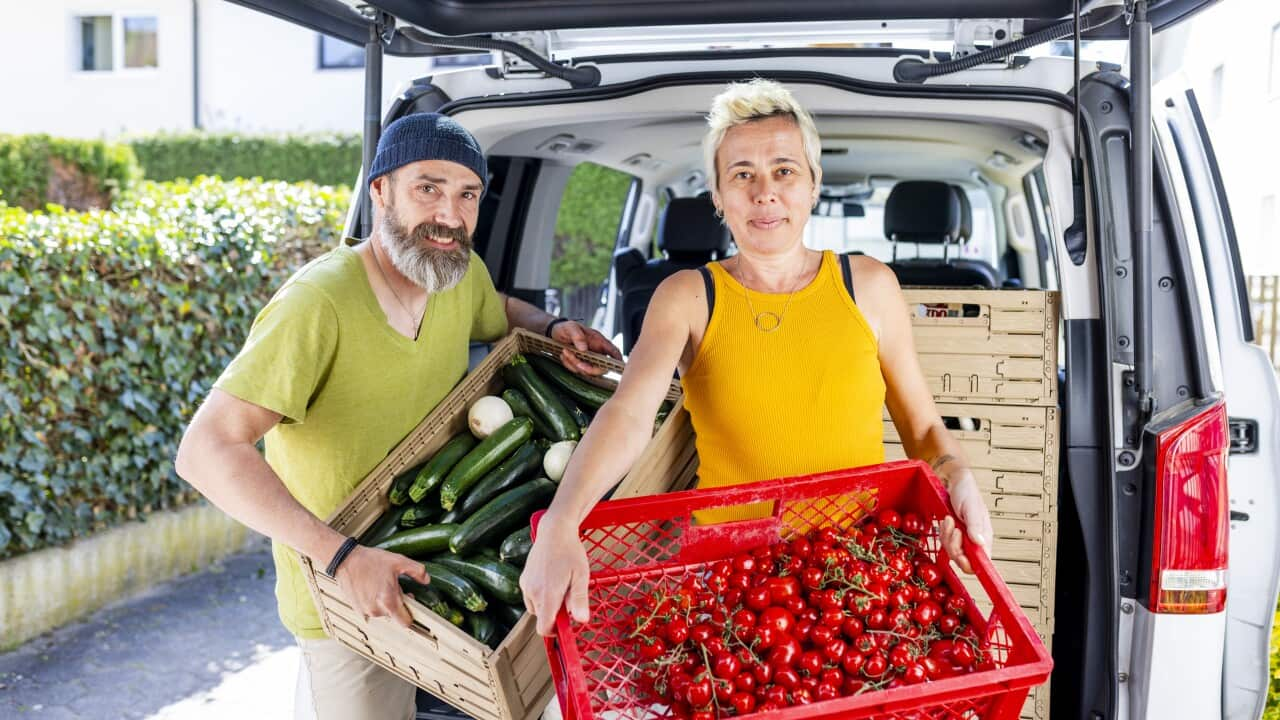Savvy shoppers are banding together for their grocery purchases in a bid to reduce hip-pocket pain amid Australia's cost of living crisis.
In what is being described as a growing trend, people involved in 'collective shopping' say it costs them half as much as buying individually at a supermarket.
Messaging apps like WhatsApp bring these groups — comprising mostly friends, family, and neighbours — together, where they chat about their fortnightly fresh produce needs.
How does collective shopping work?
Sushma Rani, a retired migrant from India who lives in Melbourne, is a member of one such group, which typically are kept small for logistical reasons.
"Our WhatsApp group connects three families in our street and we have a roster of who goes shopping every fortnight for the group," she told SBS News.
"We jot down our needs in the chat, the shopper for the fortnight compiles a list and goes to Dandenong Market and shops for everyone."

Sushma Rani is among those who take part in collective shopping. Source: Supplied / Sushma Rani
"Instead of paying per kilo for fresh produce at supermarkets, we pay for entire boxes, crates, or sacks at our local farmer’s market," Rani said.
"We then divvy it all up and split the cost accordingly.
"We don’t need to wait for things to go on special at supermarkets to save money. For us, it’s on special every time."
For the group, a shop that might cost $50 for an individual at one of the major supermarkets can come in at under half that price.
A sample fortnightly shopping trolley for this group looks like this:

"When I moved here, you could get bananas for around $2 or $2.50 a kilo in supermarkets," she said.
"Today, they’ve gone bananas at over $4 a kilo; same for cauliflower — I was shocked to see it being sold for $7 a piece a couple of months ago."
The Australian Bureau of Statistics' (ABS) latest monthly inflation data, released on Wednesday, showed the cost of fruit and vegetables rose 7.5 per cent in the 12 months to July, compared to 3.6 per cent to June, making them the largest contributors to the increase in food prices.
However, the price of fruit and vegetables can be impacted by seasonal factors and the ABS considers them "volatile" items because price changes can be frequent.

A growing trend
Katie Fisher, chief commercial officer at hunger relief charity Foodbank Victoria, said she had noticed the growing trend.
"We are absolutely seeing people come together to pool resources to buy food," she said.
"This trend is also being seen amongst Victoria’s tertiary education students who study at TAFE and universities. They’re moving in together and bulk cooking to manage their cost of living."
Fisher said these students have been contacting their educational institutions and Foodbank’s charity partners in large numbers for food support.
Kusum Sharma, who also lives in Melbourne, believes collective shopping is also good for the environment.
"Because we no longer have to drive to supermarkets to make individual shopping trips, so we save fuel," Sharma said.
"It also substantially reduces packaging waste because of the bulk-sized packaging at farmer’s markets.
"And we get a chance to support local businesses and not pump our money into corporate giants that supermarkets are."

Kusum Sharma said collective grocery shopping not only saves you money, it also helps the planet. Source: Supplied / Dr Kusum Sharma
"When I moved to Australia last year, I had no friends here," she said.
"My son and daughter-in-law are busy with their careers and we spend quality time together only on the weekends.
But now, thanks to this group, I’ve made new friends in a new country and also keep busy."









